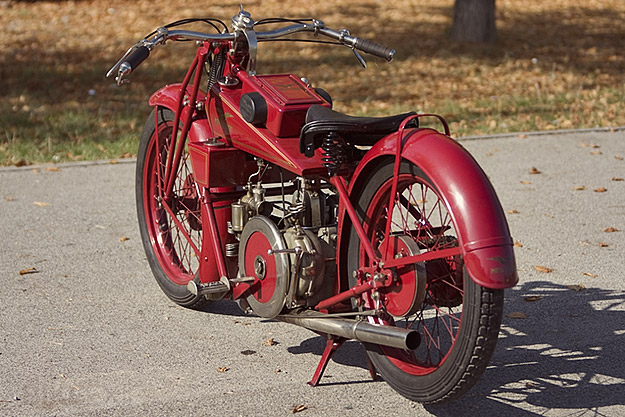 EXCLUSIVE Barn finds don’t get much rarer or more exciting than this: here’s a privateer racing motorcycle built to order in 1928 by Moto Guzzi, just seven years after the company began manufacturing. The story comes from Adam Bolton of Italian Motor Magazine, and you just couldn’t make it up. The current owner of the bike, Giuliano Tamburini, takes up the tale:
EXCLUSIVE Barn finds don’t get much rarer or more exciting than this: here’s a privateer racing motorcycle built to order in 1928 by Moto Guzzi, just seven years after the company began manufacturing. The story comes from Adam Bolton of Italian Motor Magazine, and you just couldn’t make it up. The current owner of the bike, Giuliano Tamburini, takes up the tale:
“My brother Sandro was on holiday in Reggio Calabria, in the south of Italy, around 1981. He drove past a scrap yard—there were lots of them in those days—and he happened to notice an old bike hanging from the jaws of a crane, ready to be smashed or crushed. He went in, recognised that the motorcycle was an important early Guzzi of some sort, and had a word with the owner. The owner was happy to do a swap—for three motocross bikes.”
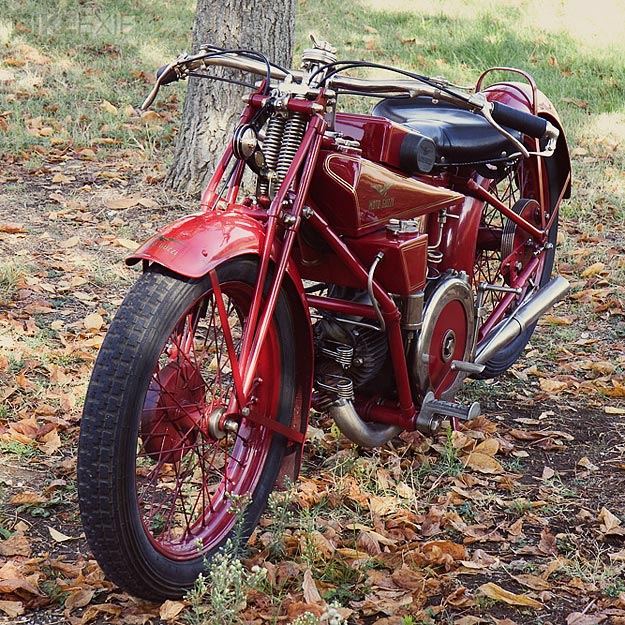
In the late 70s trials and motocross bikes were all the rage in Europe, so Giuliano and Sandro bought three, drove them down to Reggio Calabria, and did the deal. “It’s probable the man didn’t know what the Guzzi was. In those days they were just old bikes, with no value to most. Being a race bike, it would not have come with registration documents, making it even less appealing to hold on to.”
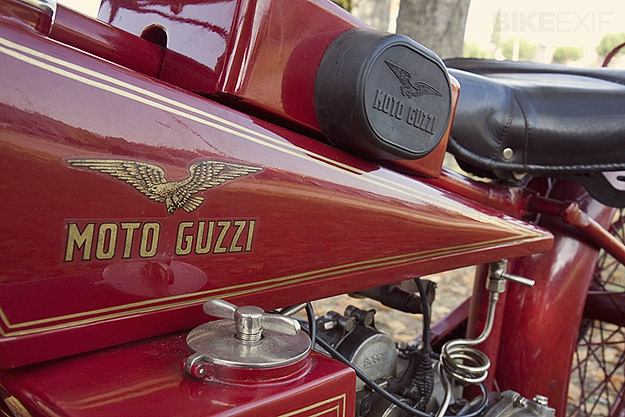
The lack of documents wasn’t a problem for Giuliano and Sandro, though. The frame number tallied perfectly with Moto Guzzi’s archive: this Corsa 2V was built at Mandello del Lario in early 1928, and sold to Guzzi dealer Mario Altomare of Cosenza. (The price would have been roughly 10,000 lire.) According to Sandro, “Dealers had to pay up front for machines, and then sell them on. Bikes were ridden down through Italy from Mandello and delivered to the dealers personally. It’s almost certain that Altomare had a firm order from a customer who wanted to race, and this bike was the one delivered.”
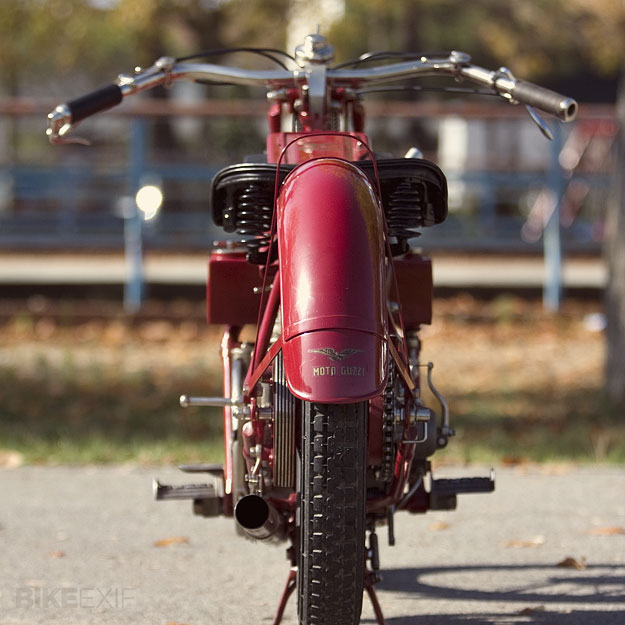
From the beginning, Carlo Guzzi was convinced of the merits of racing to develop and sell road machines. And his C2V, meaning Corsa Due Valvole or two-valve race bike, was the first product of this desire. The horizontally placed single cylinder motor was derived from the first Guzzi ever made, the GP, and the flat single configuration was to remain the preferred choice for most Guzzi road and race machines for the next fifty years. An oversquare 88 x 82 cylinder gave 498.4cc, and the motor and three speed gearbox were of unit construction—virtually unheard of when the C2V was introduced in 1923. The C2V also featured twin overhead parallel valves, exposed pushrods, rocker arms and valve springs, and dual ignition. And its low weight of only 130 kg allowed it to be propelled to a heady 75 mph, from an estimated 17 bhp at 4200 rpm. Best of all, the C2V could be bought as an over-the-counter privateer race bike and raced by anyone who could afford the price.
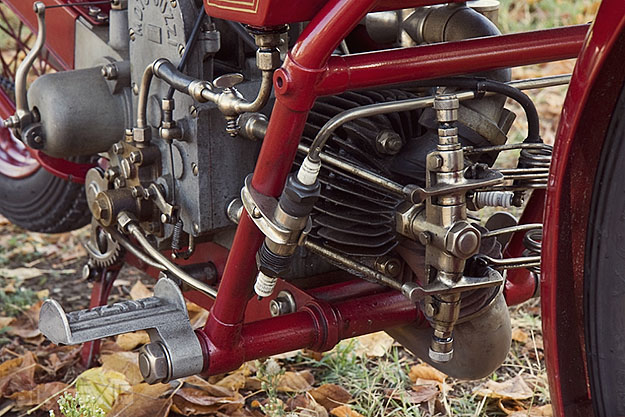
The factory C2V raced in the 1923 edition of the Giro d’Italia, with rider Guido Mentasti taking the chequered flag. It also won a brilliant victory at the Circuito del Lario in the same year, and so became a popular machine for racers taking part in hill climbs and dirt road races. But unfortunately, the racing life of Giuliano’s motorcycle is unknown. There are no records of this particular bike between 1928 and 1980, despite the Tamburini brothers’ efforts to jog the memory of dealer Mario Altomare before he died in the early 90s.
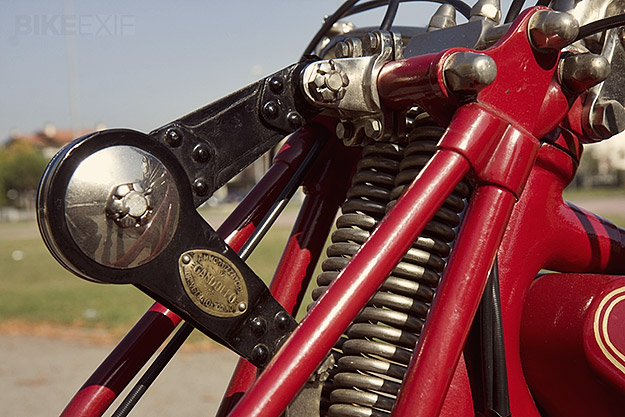
But the rest of the news is good. “The bike was luckily pretty much complete when we got it,” Giuliano explains. “There were a couple of levers missing, as was the exhaust pipe. The oil lines were wrecked, and the fuel tank was dented and bashed about. The motor was given a fairly straightforward rebuild, with all new bearings. The worst part was the top frame tube, distorted and broken by the crane, which had grabbed it in the scrap yard. That was the toughest part of the restoration, replacing this tube, while keeping the frame straight on a jig. The paintwork has been done in the same nitro-cellulose paint they would have used in the factory in 1928, to the correct Lechler colour code for the period.” In fact, the bike wears the ASI brass plaque only given to motorcycles in Italy that are in or restored to impeccable original condition, and restorer Sandro Laici and Giuliano are rightly proud of this—especially as only 200 or so C2Vs were built.
Adam Bolton, editor of Italian Motor Magazine, rode the Guzzi round a track in Tuscany, Italy. “I have to say it’s the most exciting Italian motorcycle I’ve ridden to date (and probably the most valuable). The sound from the straight-through exhaust pipe is loud, raw and stirring—and rather intimidating!”
[Photography by Marco Giuliani. Check out Italian Motor Magazine for more vintage two-wheeled goodness, or better still, subscribe.]
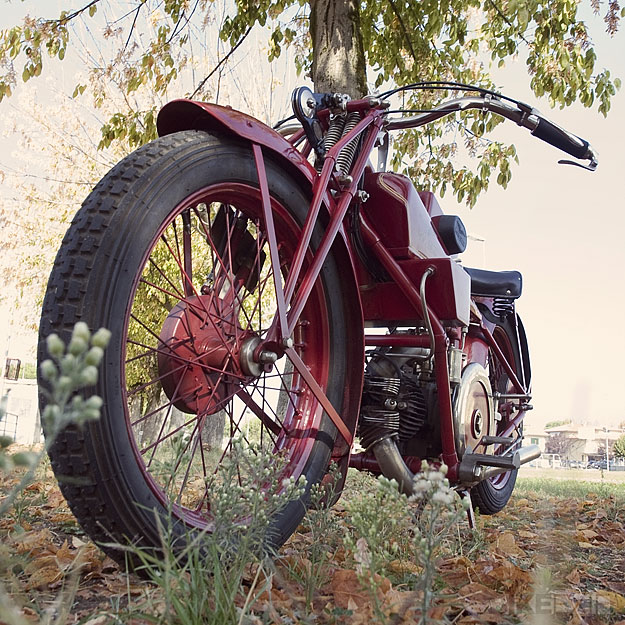








No comments:
Post a Comment